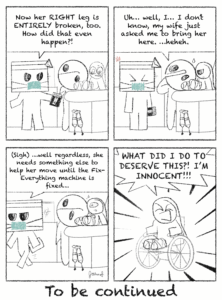Rochester topped the century mark this week for seasonal snow fall at 101.4 inches. If the current pace of snowfall continues, UR will obliterate its previous snowfall record of 161.7 inches by more than three feet.
“It has been nothing too remarkable,” Tom Paone of the regional National Weather Service in Buffalo said. “But, the slow and steady snowfall just adds up.” Rochester has seen snow every day so far this year.
Paone explained this year, heavy snowfall was caused by arctic air moving so far south this year and constant reinforcing pattern of cold fronts bringing in moisture.
The good news, for those tired of the snow and the cold, is that the patterns appear to be changing this weekend as milder air is moving into the area from the west. Temperatures this weekend should crack the freezing mark for the first time in more than a month.
Somebody has to clear all of the snow and that job falls to UR Facilities.
“Snow removal is a pretty serious business for us,” Dan Shied, manager of horticulture and grounds said. “We’ve had some very difficult conditions and unless you really understand or see the people, you wouldn’t think we’re working as hard as we could, when in reality, it probably is twice as much as highly-traveled pathways, based on usually.” He said during the day two facilities employees patrol the River Campus looking for icy and snowy spots and that Grounds Management staff are on call 24 hours a day, seven days a week.
Facilities also has an employee work between 3:30 p.m. and midnight and midnight and 8:30 a.m. to serve as UR’s eyes and ears if a snow storm hits UR. If the employee feels more staff is necessary, they will call them in.
“Because of the unpredictability of the lake-effect snow, we can’t rely on what the weather is doing at someone’s house,” he said.
UR has an extensive snow plan, calling for different strategies for keeping pavement clean based on how much snow is falling or has fallen. Schied said the focus is on their time of use. After those paths are cleared, secondary pathways are shoveled.
Parking lots are generally not plowed during the normal workday because a majority of UR snow removal equipment is too large to maneuver down narrow laneways. Most work is done after hours
A large problem this year has been the frigid temperatures.
“The constant snow has been much less a problem than the exceedingly low temperatures,” Schied said. “Lack of sun and low temperatures make de-icing compounds less effective.”
Continual snows, he said, have combined to create a hard-pack of snow that binds to paved surfaces. While deicing compounds are unable to effectively melt the snow at temperatures below 20 degrees, they are able to soften it, which creates the hard-pack slush on many walkways on campus. Daily lake effect snows of several inches, compound facilities’ problem.
Schied said the daily lake effect snows might not seem like a lot but he said “when put over a 6 million-plus square feet area to be cleaned, it amounts to quite a bit.”
To illustrate exactly how much snow, Schied cited several calculations. Immediate UR properties — including the River Campus, the Medical Center and the South Campus through Whipple Park — comprise in excess of 6 million square feet of roads, parking lots and sidewalks. One inch of snow would equal 18,765 cubic yards of snow over these areas.
“There are real people making real sacrifices trying to do the best job they can,” he said.
To visualize exactly how much this number is, Schied said an inch of snow in the aforementioned areas would fill the football-field area of Fauver Stadium with a solid cube 11.26 feet tall.
With all the snow and cold, Schied encouraged people to try not to be in a hurry, to wear proper footwear and to be aware of current and upcoming conditions.
He encouraged people who see problem areas to contact the facilities snow removal line at x50000.
Two of Paone’s colleagues in Buffalo are trying to revive an upstate New York tradition and bring back the Golden Snowball competition to determine which is the state’s snowiest big city.
The race historically boils down to three cities — Rochester, Buffalo and Syracuse, with Syracuse usually having the upper-hand. Most of Buffalo and Rochester’s snow come from lake-effect squalls off either Lake Erie or Lake Ontario. Syracuse, because of its central location, gets socked by both nor’easters and lake-effect storms off of Lake Ontario, which is why it averages 115 inches of snowfall per winter. Rochester finishes second with slightly more than 100 inches, while Buffalo comes in third at around 97 inches.
This year, Syracuse and Rochester are neck-and-neck, each registering just over 100 inches. Buffalo is a distant third with 85 inches.
Schied isn’t preparing Rochester’s acceptance speech. “Everybody likes to get awards,” he said. “I’m not sure if that’s one that we necessarily have to claim.”
Hildebrandt can be reached at thildebrandt@campustimes.org.

